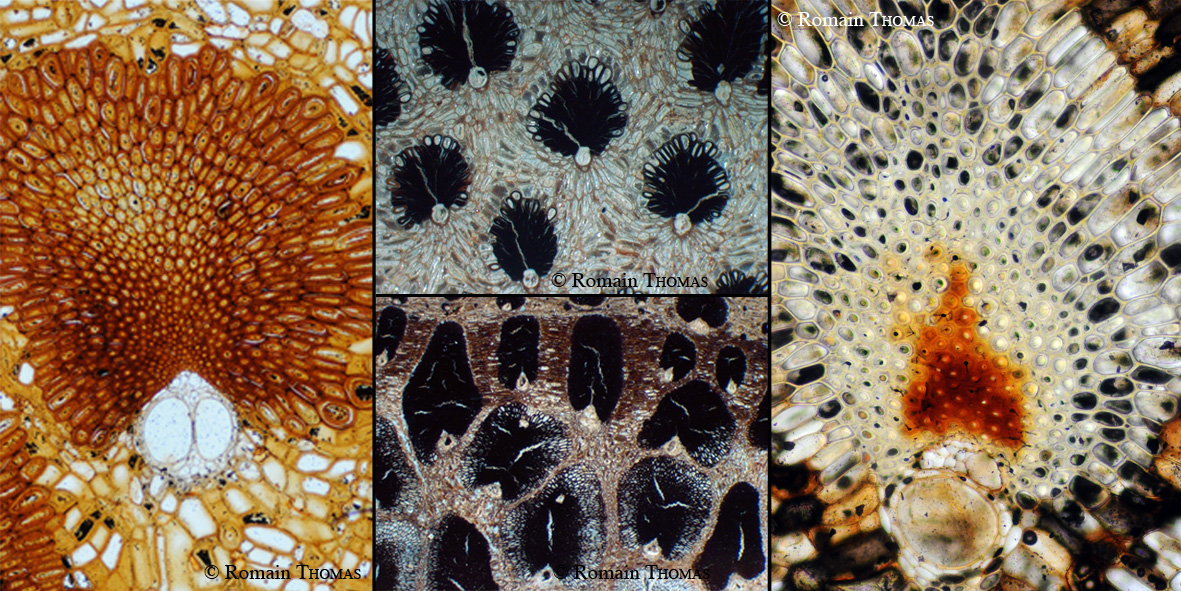 |
Palm-IDAnatomical identification of the Palms - Palm anatomy |
 |
How to cite this work:
Thomas, R. 2011. Palm-ID, a database to identify the palm stem anatomy
with an expert system (Xper2). Continuously
updated, Université Paris 6 – Muséum
national
d’Histoire naturelle, Paris. (URL
http://www.infosyslab.fr/Palm-ID/) accessed
6/10/2025.
bibtex file ris file
All the descriptors and the descriptions are published in Thomas and De Franceschi (2013):
Thomas, R. and De Franceschi, D. (2013). Palm stem anatomy and Computer-aided identification: the Coryphoideae (Arecaceae). American Journal of Botany 100(2): 289-313. bibtex file ris file view on American Journal of Botany website
The Palm-ID knowledge base contains 31 descriptors (in 7 groups as cortex, central cylinder, fibrous vascular bundles…) with 97 states and 37 taxa (subfamily, tribes and genera). 500 figures are also included to facilitate the identification. During the identification, the polymorphism is undertaken with the use of logical operators. All the descriptions can be analysed in detail: check base function, discriminant power of the descriptors, and comparison of the taxa.
A simplified version of the base enables to identify the same taxa with only the least polymorphic descriptors (the most robust).
Currently, all the palm subfamilies are included but only the Coryphoideae were the subject of a detailed anatomical study.
The Xper web page (english and french) has a detailed documentation of the software with a Use FAQ, demo video, guideline...
This work is protected by the French law on the intellectual property
code:
Art. L.112-3.
Les auteurs de
traductions, d'adaptations,
transformations ou arrangements des oeuvres de l'esprit jouissent de la
protection instituée par le présent code sans
préjudice des droits de
l'auteur de l'oeuvre originale. Il en est de même des auteurs
d'anthologies ou de recueils d'oeuvres ou de données
diverses, tels que
les bases de données, qui, par le choix ou la disposition
des matières,
constituent des créations intellectuelles.
On entend par base de
données un recueil d'oeuvres, de données ou
d'autres éléments
indépendants, disposés de manière
systématique ou méthodique, et
individuellement accessibles par des moyens électroniques ou
par tout
autre moyen.